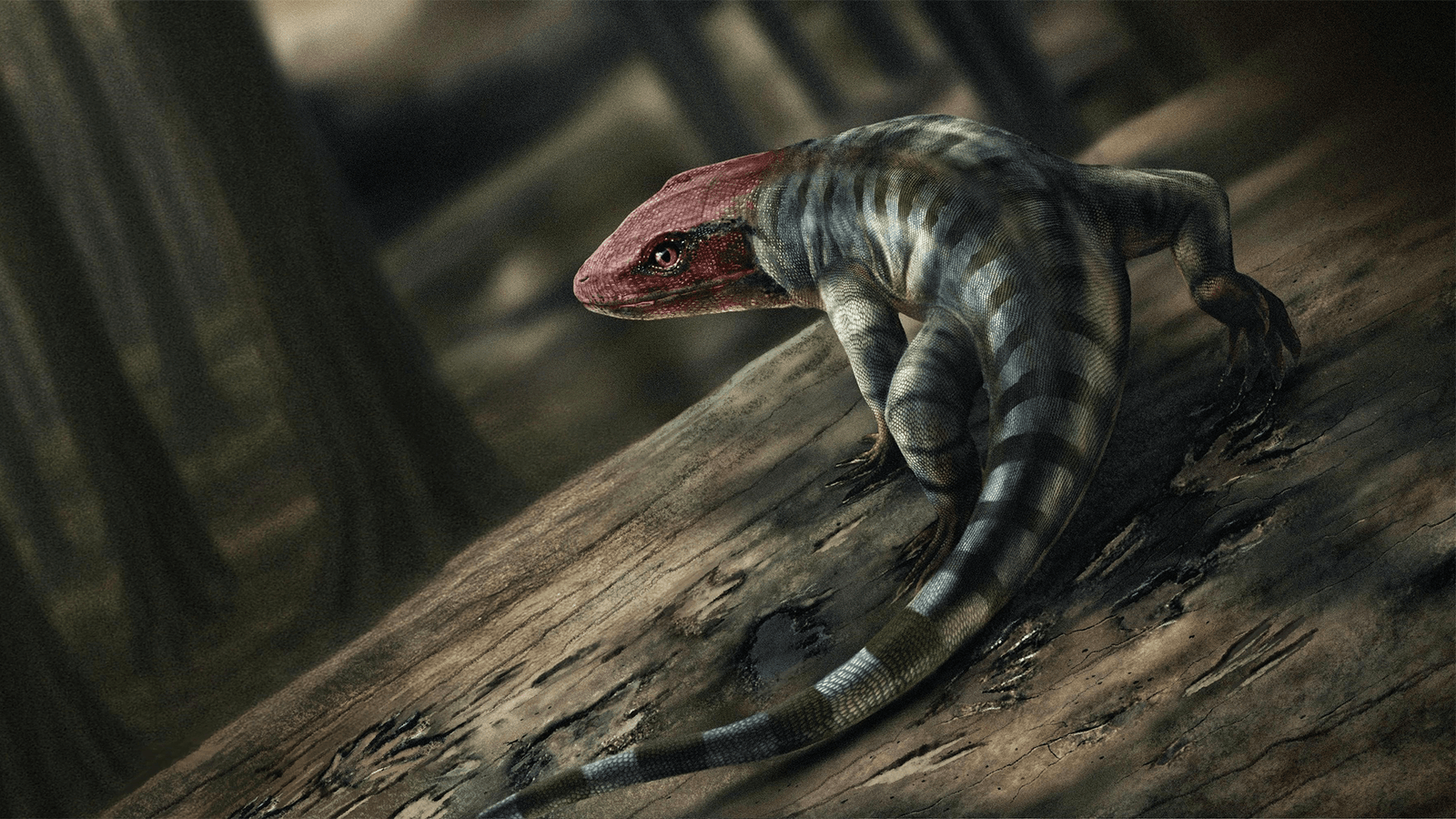One of the most impactful stories in evolution is getting a rewrite, thanks to the exciting discovery of the earliest known set of reptile footprints. Craig A. Eury and John Eason, two amateur paleontologists exploring the fossil-rich Snowy Plains Formation in Australia, found a rock with an intriguing set of fossilized prints. They brought the intriguing specimen to professional paleontologists, who soon discovered that the roughly 356 million-year-old fossilized claw prints likely belong to an amniote–an early reptile relative.
Though small in stature, amniotes were a large evolutionary leap forward towards land-dwelling, four-limbed animals called tetrapods. The age of these prints suggest that amniotes evolved millions of years earlier than expected, according to a study published May 14 in the journal Nature.
“I’m stunned,” Per Ahlberg, a paleontologist at Uppsala University in Sweden who coordinated the study, said in a statement. “A single track-bearing slab, which one person can lift, calls into question everything we thought we knew about when modern tetrapods evolved.”
When fish grew legs
Tetrapods include all vertebrates with four limbs that primarily live on land, including everything from frogs to turtles to eagles, to tigers to humans. Their story began as fish left the water between 390 and 360 million years ago. Their descendants began to diversify into the ancestors of modern amphibians and amniotes–the group that includes birds, reptiles, and mammals.
Originally, the timeline for how this massive diversification of life occurred was fairly clear-cut. The first tetrapods evolved roughly 390 million years ago during the Devonian period.
Amniotes and the earliest members of the modern groups of animals we see today followed fishapods during the Carboniferous period. Previously, the earliest amniote fossils dated back to about 320 million years old to the late Carboniferous. Based on this new evidence, researchers concluded the start of the point on the evolutionary tree where the ancestors of amphibians and amniotes split actually happened in the earliest days of the Carboniferous or 356 million years ago.
“The implications of this discovery for the early evolution of tetrapods are profound,” John Long, a study co-author and paleontologist at Flinders University in Australia, said. “All stem-tetrapod and stem-amniote lineages must have originated during the Devonian period – but tetrapod evolution proceeded much faster, and the Devonian tetrapod record is much less complete than we have believed.”

“Claws are present in all early amniotes, but almost never in other groups of tetrapods,” Ahlberg said. “The combination of the claw scratches and the shape of the feet suggests that the track maker was a primitive reptile.”
If this new interpretation is correct, it pushes the origin of reptiles, and thus amniotes as a whole, back by roughly 40 million years to the earliest Carboniferous. A new set of fossil reptile footprints uncovered all the way across the globe in Poland are also detailed in the study and bolster the evidence. These European footprints are not as old as the ones from Australia, but are still older than previous specimens.
“The implications of this discovery for the early evolution of tetrapods are profound,” John Long, a study co-author and paleontologist at Flinders University in Australia, said. “All stem-tetrapod and stem-amniote lineages must have originated during the Devonian period – but tetrapod evolution proceeded much faster, and the Devonian tetrapod record is much less complete than we have believed.”
A place on the evolutionary tree
According to the team, this recalibration of the origin of reptiles has a ripple effect on the whole timeline of tetrapod evolution. Tetrapods must be older than even the earliest amniotes, since it has a deeper branching point on the evolutionary tree.
“It’s all about the relative length of different branches in the tree,” said Ahlberg. “In a family tree based on DNA data from living animals, branches will have different lengths reflecting the number of genetic changes along each branch segment. This does not depend on fossils, so it’s really helpful for studying phases of evolution with a poor fossil record.”

The team believes that amphibians and ammonites split apart further into the Devonian period and were likely a contemporary of the primitive, transitional “fishapod” called Tiktaalik. This evidence indicates that a diverse group of tetrapods existed when only transitional “fishapods” were believed to be dragging themselves around muddy shorelines and starting to explore the land.
If this new theory holds, it is likely that the evolution of tetrapods from aquatic creatures to those fully living on land may have occurred even faster than previously believed.
“The Australian footprint slab is about 50 cm [1.5 feet] across,” said Ahl
